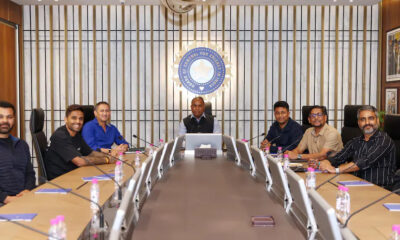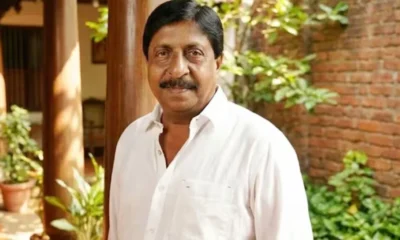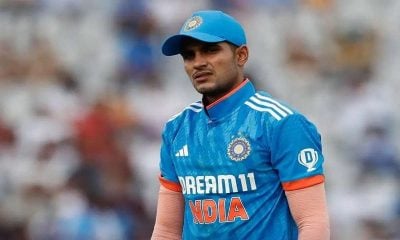India News
Judge Loya death case in Supreme Court: Arguments reveal discrepancies, missing details
Published
8 years agoon
By

The Supreme Court bench of Chief Justice Dipak Misra and Justices AM Khanwilkar, DY Chandrachud on Monday (February 5) got back to the hearing of the plea seeking independent probe into the mysterious death of Judge BG Loya who was handling the Sohrabuddin Sheikh case.
The lawyers arguing for a probe listed discrepancies and missing links around the death of the judge.
The following were the proceedings in court:
It was submitted before the court that a video recording of the father and sister has been found. The bench permits the admission of the recording.
Senior counsel V Giri, reading out the facts of the case, says there is no document which establishes what happened in Dande. The document does not reveal what treatment he (Loya) underwent. He said that Page 52 of the compilation documents submitted is incomplete. That page states two injections were given but there are no details by which it can be established what treatment was carried out.
He also noted that the time of the discharge of the body from the hospital differs. Discrepancies exist. Also, no verification has been done by the four doctors. He said documentary evidence would show three people were involved during the treatment.
He said police constable Pankaj Thakur has been mentioned in serial No. 4.
He also said that while postmortem was conducted by doctor Kunda in Nagpur, no documentary evidence has been recorded. Which mean no statement has been taken of that doctor.
He further submitted that there are no proper documents to show when he was taken (to the hospital). No statement has been taken of the doctor as (apparently) Sitapuri police has no jurisdiction over the matter.
He said reference has been made of the register at Sadanpuri station. It was just that constable Pankaj Thakur handed over the reports/records along with all the belongings as the postmortem was completed. No verification has been done as to Pankaj’s hand in this case and on the jurisdiction of Sitaputi Police Station.
Also, no verification has been done as to who handed over the body to Dr Rathi. There is discrepancy in this. On completion of the postmortem, the body of the deceased is issued along with all his belongings.
It was also submitted in court that on February 7, 2016, an accidental death report was made. Hence questions arise about how this was done when the documents show something else.
There are also discrepancies regarding the timings in the whole act. The first document referred to is the letter sent to the Chief Justice of the high court. This document is a letter from the Criminal Intelligence Department.
Dr Prakash Rathi’s statement has a significant role in the enquiry
Dr Rathi’s statement was important, but it was noted that none of the statements were verified by the State Intelligence department.
Dr Rathi accompanied Justice Loya in the hospital and his statement at Dande was recorded. But Judge Loya was not taken to Dande hospital. At 6.15 am he was declared dead.
The documents must be recorded in a satisfactory manner, the counsel suggested. “Why was it not possible for the commission to record the statements and the documents if they were available?” he asked. “Why it is not possible for intelligence commission to go to Nagpur and record the statements?”
Counsel Giri mentions Dr Rohan Rai, whose reports have been mentioned. None of the doctors’ statements were recorded even though they were present in the hospital.
The statement of constable Pankaj Thakur was also not taken.
Senior counsel Harish Salve submitted that the second statements were recorded at the Sitapuri PS, which were picked up from somewhere else.
Senior counsel Dushyant Dave submitted his interest to cross examine under order 9. Senior counsel Indira Jaising submitted to the court that there are so many squibbles that “originals need to be seen by yourself.”
Senior counsel Dushyant Dave said that he will move an IA under Supreme Court rules to cross examine the persons who have given their statements.
Also, it still remains to be answered whether ECGs were done at Dande hospital or some other hospital.
Indira Jaising said no ECGs have been produced.
Giri said the postmortem report does not suggest any damage to the brain. Why no neurosurgeon was considered?
At 4 pm he complained about the pain and at 6:15 am he was declared brought dead, Giri said. Judge Brij Mohan Loya had come to attend the wedding at 4:15 pm and had complained of severe pain. He was taken to hospital where at 6:15 am doctor said Loya was brought dead.
Dr Prakash Rathi’s has given two concurrent statements. He was handed over the dead body of Loya, with all his belongings. The person who handed over the dead body is also attached to Sitapudi Police Station.
Accidental death is registered at Sadar police station. Registration is done at Sadar station at 4 and the body goes to the government hospital – both these events show different timings.
Page 40 shows registration of death timings that requires explanation as it shows false and contradictory timings. More interestingly, Giri said, the death summary was recorded in 2016, but the death took place in 2014.
Documents were collected, none of the statements were recorded. No explanation has been sought in the same case as to why the death summary was recorded in February 2016. The only doctor of Dande hospital who was examined by the police submitted that he was not present at the hospital when Loya’s body was brought in.
Who brought deceased to the hospital and who were present during the whole procedure is not clear.
There is nothing clear as to what exactly happened with the deceased, said Giri.
How Prashant Rathi came to be there at Seetapadi Police Station at 8:30am?
Justice Chandrachud pointed out to the counsel to recheck on the meaning of nakalbayaan. This was probably because the documents are majorly in Marathi.
He further stated that explanation was required regarding:
- How was Prashant Rathi present at that time in Sitapudi PS?
- How was the death summary concluded in 2016?
Giri said none of the statements were given by Prakash Rathi in 2014. No explanation was given as why the body was taken to another place when his whole family was in Mumbai.
Giri requests for fresh investigations.
In a clubbed case, senior counsel Sisodia started his submission. He said the petitioner is journalist and come to this court to point contrasting articles in two publications, Carvaan and Indian Express.
He said the judges can make their own decision on the place of funeral as printed in Indian Express. He talked about serious allegations of bribery too.
The allegation is that one judge was transferred and other judge was murdered because he refused a bribe of more than Rs 100 crores.
An argument arose thereafter.
Sisodia said he was not taking sides, but one should not be attacked with an allegation without proper enquiry.
Indira Jaising said if Sisodia’s client didn’t want an enquiry, why had the petition been filed?
Then, when Dave refused to listen to him, Justice Chandrachud said: “Let us not reduce the dialogue of this court (to an extent) that even a fish market feels ashamed of.”
Dave then alleged that Sisodia was taking the side of Amit Shah (BJP President) since he did not mention his side properly.
At this Sisodia said: “We are not the judge. We can put our views and not take sides.”
With tempers rising and decibels too, Justice Chandrachud said: “Let’s preserve the dignity of this court.”
But Dave and Jaising start again to present their views. Then, when Salve said “it is oppressive,” Dave started shouting, saying “what is oppressive? Is it that he appeared for Amit Shah first and then started appearing for the state? These people are making money and we (who) are fighting for justice are being slapped with notices from the Bar Council of India that our right to practice will be cancelled. We are here to fight for justice. Your lordships can do whatever they want to do.”
Jaising said: “There are three pieces of evidence present in the public domain, not produced by the state of Maharashtra.” She says that the State of Maharashtra has not produced evidence to show that justice Loya actually stayed there.
Referring to Page 81, entry number 47, where qa name mentioned read Prakash Babasaheb Ambedkar. Salve clarified it could be Bada Saheb, Prakash’s pet name. “Bada means youngest in Marathi,” said Justice Chandrachud. Bada Saheb is not the name of a person.
Another name mentioned in the register is Milin and then another name mentioned on another page is Kulkarni. However, Justice Loya’s name is not mentioned in the register, submits Jaising.
In the register the number of occupants of the room was to be mentioned. Except for one, rest all of them had room number. She asked: “How is it possible that three judges would stay in a room with an occupancy of two, when other rooms were empty as well?”
Also, why his name is not mentioned in the register?
You may like
-
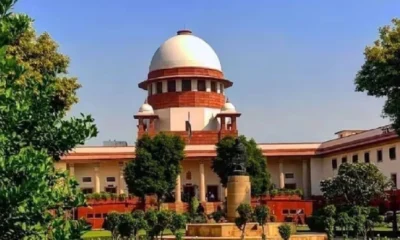

Supreme Court orders CBI probe into rising digital arrest scams across India
-


Supreme Court seeks detailed report from Delhi govt on AQI monitoring amid water sprinkling claims
-
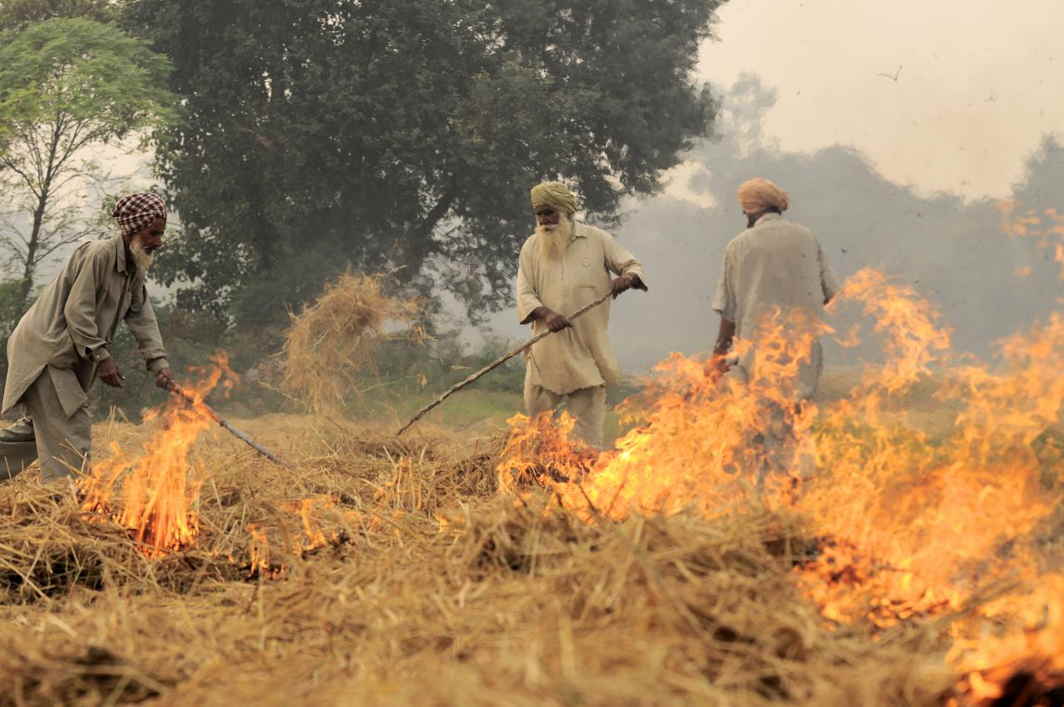

Supreme Court seeks detailed report from Punjab, Haryana on stubble burning amid severe Delhi air pollution
-
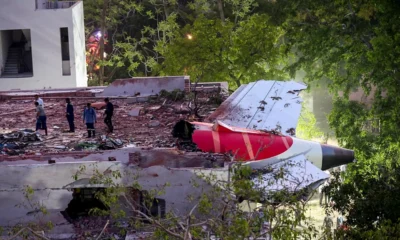

Air India crash: Supreme Court says can’t blame pilot, seeks answers on probable causes
-
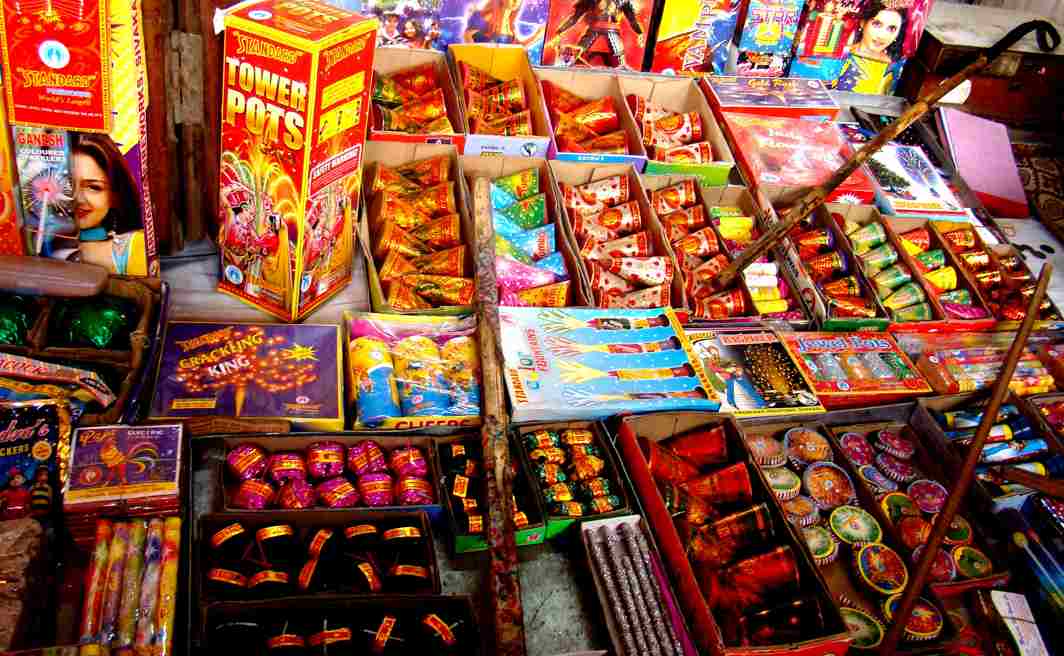

Supreme Court chose right to burn crackers over right to live, says Amitabh Kant on Delhi’s air pollution
-
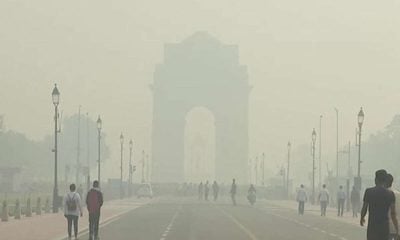

Did Delhi’s green Diwali really work? AQI data shows familiar pattern of post-festive pollution
India News
Thick smog engulfs Delhi, flights and trains delayed as air quality slips to very poor
Delhi remained under a thick smog cover as air quality dipped into the very poor category, causing delays in flights and train services due to low visibility.
Published
1 day agoon
December 20, 2025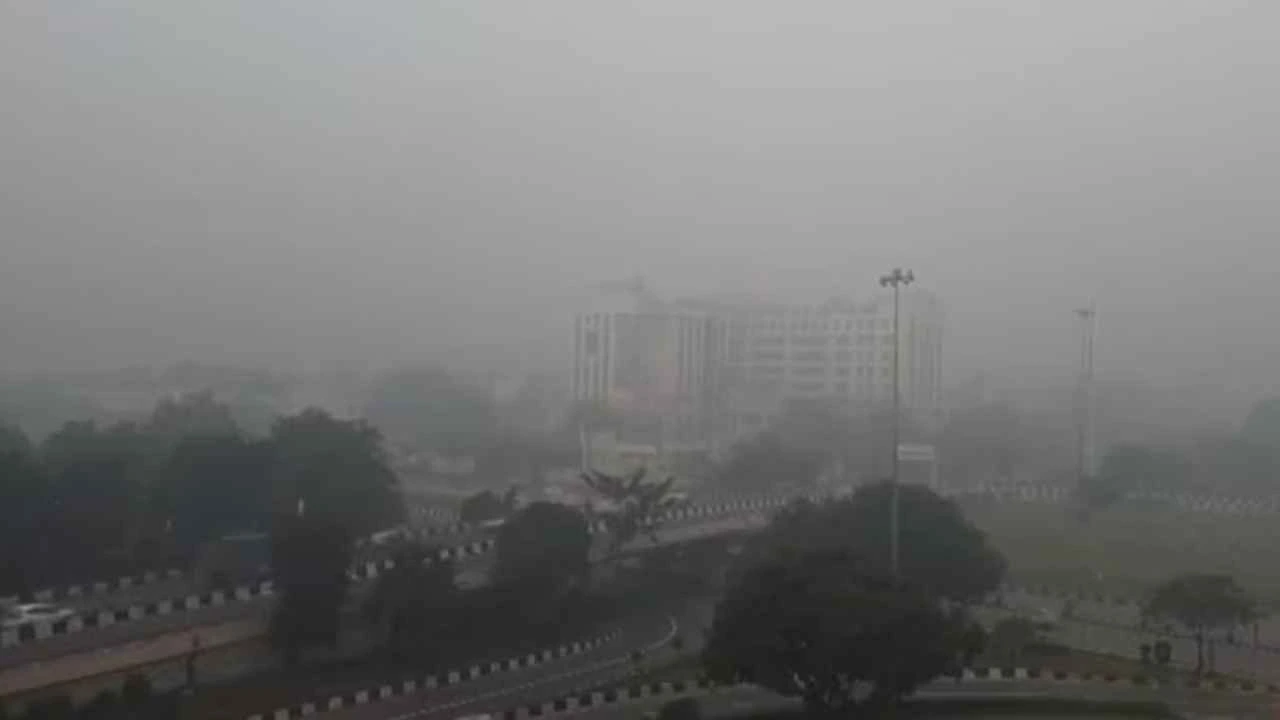
A dense blanket of smog covered Delhi on Saturday morning, pushing air quality into the ‘very poor’ category and disrupting flight and train operations across the national capital and adjoining areas. Reduced visibility due to smog led to delays in air and rail traffic, while authorities warned that pollution levels could worsen further in the coming days.
The Air Quality Index (AQI) in Delhi was recorded at 380, placing it in the ‘very poor’ bracket. Visuals from Bhairav Marg near Pragati Maidan showed motorists using headlights during early hours, as visibility remained low. At around 7 am, the AQI at this location stood at 433.
Nearly half of Delhi’s air quality monitoring stations reported ‘severe’ pollution levels. Anand Vihar recorded an AQI of 428 with PM2.5 as the dominant pollutant, while Jahangirpuri reported an AQI of 425.
Transport services hit by low visibility
Flight operations at Delhi airport were impacted due to low visibility conditions. The airport issued an advisory asking passengers to check with their respective airlines for updated flight information, as low visibility procedures were in place. Runway visibility was reported to be between 800 and 1,200 metres.
Live flight tracking data showed multiple flights running behind schedule. One airline also warned passengers about possible disruptions at several airports in northern and eastern India, including Delhi, due to dense fog conditions. Travellers were advised to verify flight status before heading to the airport, with options offered on select flights to reschedule or seek refunds without additional charges.
Rail services were also affected, with more than 30 trains running late by an average of three to four hours. Some long-distance trains reported delays of over six to eight hours, causing inconvenience to passengers travelling to and from the capital.
Air quality likely to worsen
The weather department had earlier forecast dense to very dense fog at isolated places over Delhi and several parts of north and central India. According to the Air Quality Early Warning System for Delhi, pollution levels are expected to remain in the ‘very poor’ category on Saturday and may slip into the ‘severe’ category on Sunday and Monday. In view of the deteriorating conditions, an ‘orange’ alert has been issued for Saturday.
India News
PM Modi inaugurates India’s first nature-themed airport terminal in Assam
Prime Minister Narendra Modi inaugurates the new nature-themed terminal at Guwahati airport, the largest in Northeast India, built around bamboo, orchids and regional heritage.
Published
1 day agoon
December 20, 2025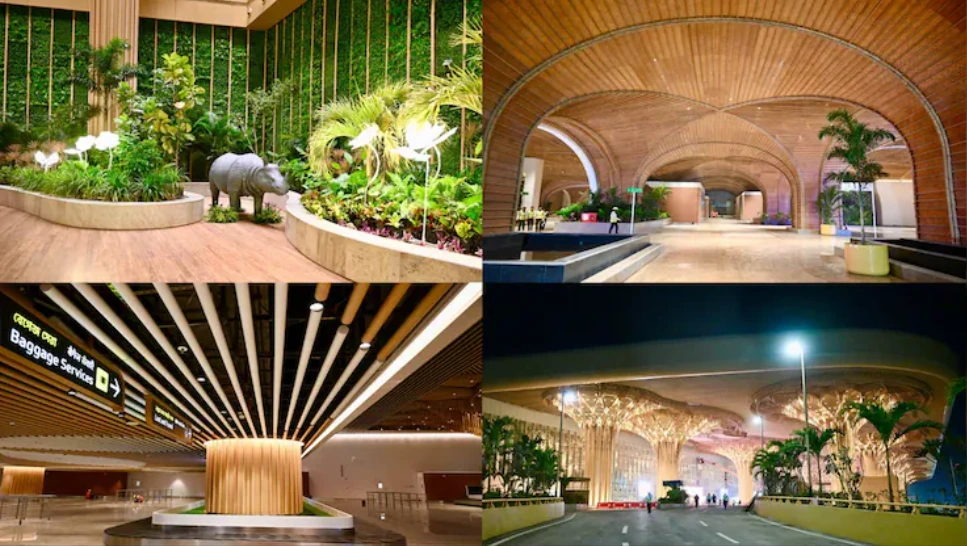
Prime Minister Narendra Modi is set to inaugurate the new terminal building of Lokapriya Gopinath Bordoloi International (LGBI) Airport in Guwahati today, marking a major milestone for aviation infrastructure in the Northeast. Built at an estimated cost of around Rs 4,000 crore, the facility is being projected as the largest airport terminal in the region and a key boost to connectivity, tourism and economic activity in Assam.
The Prime Minister is scheduled to arrive in Guwahati around 3 pm as part of his two-day visit to the state.
Northeast’s largest airport terminal takes shape in Guwahati
The newly constructed terminal is nearly seven times larger than the existing one and has been designed to cater to the region’s rapidly growing air traffic. Once fully operational, it is expected to handle up to 13.1 million passengers annually by 2032.
Officials said the terminal is planned as a regional connectivity hub, with a focus on strengthening air links between India and Southeast Asia. The airport will be capable of handling up to 34 air traffic movements per hour, the highest capacity among airports in the Northeast. The facility will also be equipped with one of the most advanced Instrument Landing Systems to support safer and more efficient operations.
Nature-inspired design rooted in Assam’s identity
What sets the Guwahati terminal apart is its distinctive nature-themed architecture. Conceptualised under the theme “Bamboo Orchids”, it is being described as India’s first airport terminal inspired entirely by natural and cultural elements.
The interiors draw from the landscapes of Northeast India, with design elements reflecting indigenous orchids, locally known as Kopou Phool, and the flow of the Brahmaputra river. The terminal incorporates more than 2,000 species of plants, includes a dedicated zone inspired by Kaziranga National Park, and features artefacts representing Majuli Island.
A key architectural highlight is the expansive bamboo vault, created using around 140 metric tonnes of locally sourced bamboo. The space has been envisioned as a multifunctional cultural centre aimed at encouraging community interaction and showcasing the region’s heritage. Design elements such as japi motifs, the iconic rhino symbol and 57 orchid-inspired columns further reinforce the cultural narrative.
Arriving passengers will also experience a unique “Sky Forest”, featuring nearly one lakh plants of indigenous species, designed to create an immersive forest-like ambience within the terminal.
Focus on digital integration and passenger convenience
Spread over nearly 1.4 lakh square metres, the integrated new terminal has been designed to handle around 1.3 crore passengers annually. It is supported by significant upgrades to the runway, airfield systems, aprons and taxiways.
The terminal places strong emphasis on digital integration, with 14 entry points, including four DigiYatra gates, aimed at easing passenger movement. Facilities such as full-body scanners for non-intrusive security checks, automated baggage handling systems, fast-track immigration and AI-driven airport operations have been incorporated to ensure smoother travel experiences.
Other engagements during PM Modi’s Assam visit
During his two-day stay, the Prime Minister will also lay foundation stones for multiple development projects and address public gatherings. He is scheduled to visit the Swahid Smarak Kshetra to pay tribute to the martyrs of the historic Assam Movement.
Later in the day, PM Modi will perform the bhoomipujan for a new brownfield Ammonia-Urea Fertiliser Project at Namrup in Dibrugarh district, within the existing premises of the Brahmaputra Valley Fertiliser Corporation Limited.
India News
Assam train accident: Eight elephants killed after Rajdhani Express derailment in Hojai
Eight elephants were killed after the Rajdhani Express collided with a herd in Assam’s Hojai district, causing multiple coaches to derail and disrupting train services.
Published
1 day agoon
December 20, 2025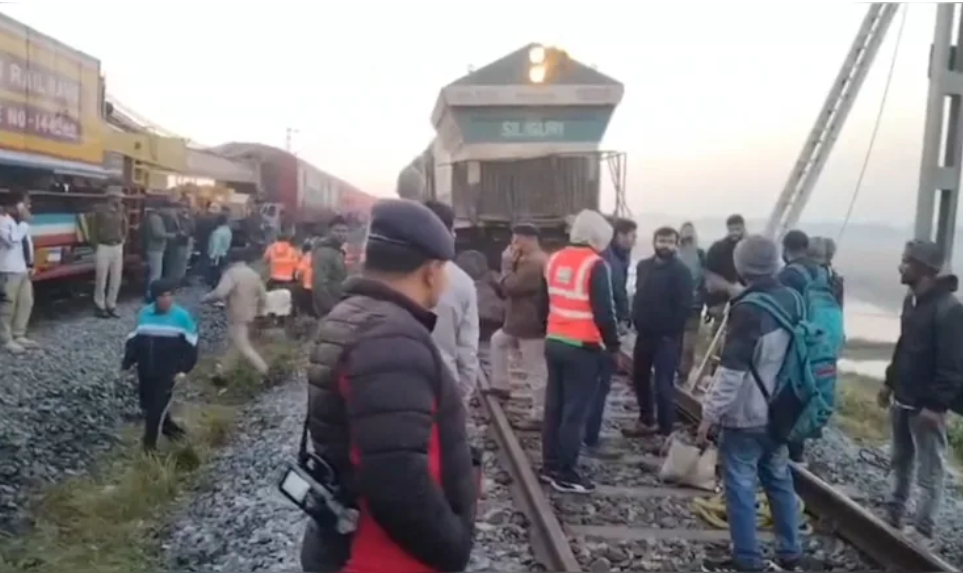
At least eight elephants were killed and a calf was injured after a herd collided with the Sairang–New Delhi Rajdhani Express in Assam’s Hojai district, leading to the derailment of the locomotive and five coaches early Saturday. Railway officials confirmed that no passengers were injured in the incident.
Forest department officials said the collision occurred when the New Delhi-bound Rajdhani Express struck a herd of elephants on the tracks. The impact caused multiple coaches to derail, disrupting rail traffic on the busy route connecting the Northeast with the national capital.
Train services hit, passengers shifted to other coaches
Following the derailment, rail movement towards Upper Assam and other parts of the Northeast was affected due to damaged coaches and elephant remains scattered on the tracks. Accident relief trains and senior railway officials rushed to the site to restore services.
Passengers travelling in the affected coaches were temporarily accommodated in vacant berths in other coaches of the same train. Officials said that once the train reaches Guwahati, additional coaches will be attached to ensure all passengers can continue their journey.
Collision occurred outside designated elephant corridor
According to officials, the accident took place at a location that is not marked as a designated elephant corridor. The loco pilot reportedly applied emergency brakes after spotting the herd on the tracks, but the elephants ran into the train, resulting in the collision and derailment.
Forest authorities confirmed that eight elephants died on the spot, while one injured calf was rescued. Local residents said the herd consisted of around eight elephants at the time of the accident.
Elephant deaths in train accidents remain a concern
The incident comes amid continued concerns over wildlife deaths on railway tracks. Data shared by the Environment Ministry in Parliament earlier showed that at least 79 elephants have died in train collisions across India over the past five years, based on reports from states and Union Territories.
The ministry has said that several preventive steps are being taken in coordination with the Railways, including speed restrictions in elephant habitats, use of sensor-based detection systems, and construction of underpasses, ramps and fencing at vulnerable locations. Guidelines and capacity-building programmes have also been introduced to reduce human-animal conflict along railway lines.

India announces T20 World Cup 2026 squad, Shubman Gill dropped as Axar Patel named vice-captain

Veteran Malayalam actor and filmmaker Sreenivasan passes away at 69

T20 World Cup 2026: Selectors weigh Shubman Gill role as India squad announcement awaited

Thick smog engulfs Delhi, flights and trains delayed as air quality slips to very poor



